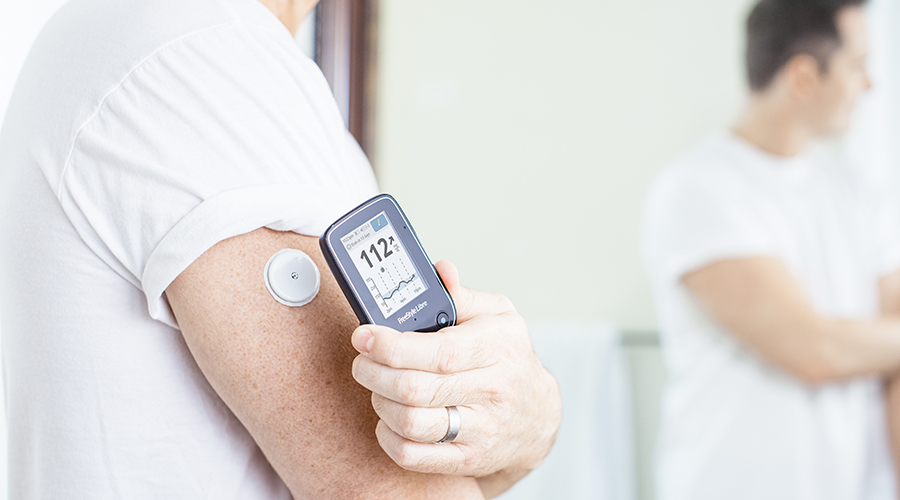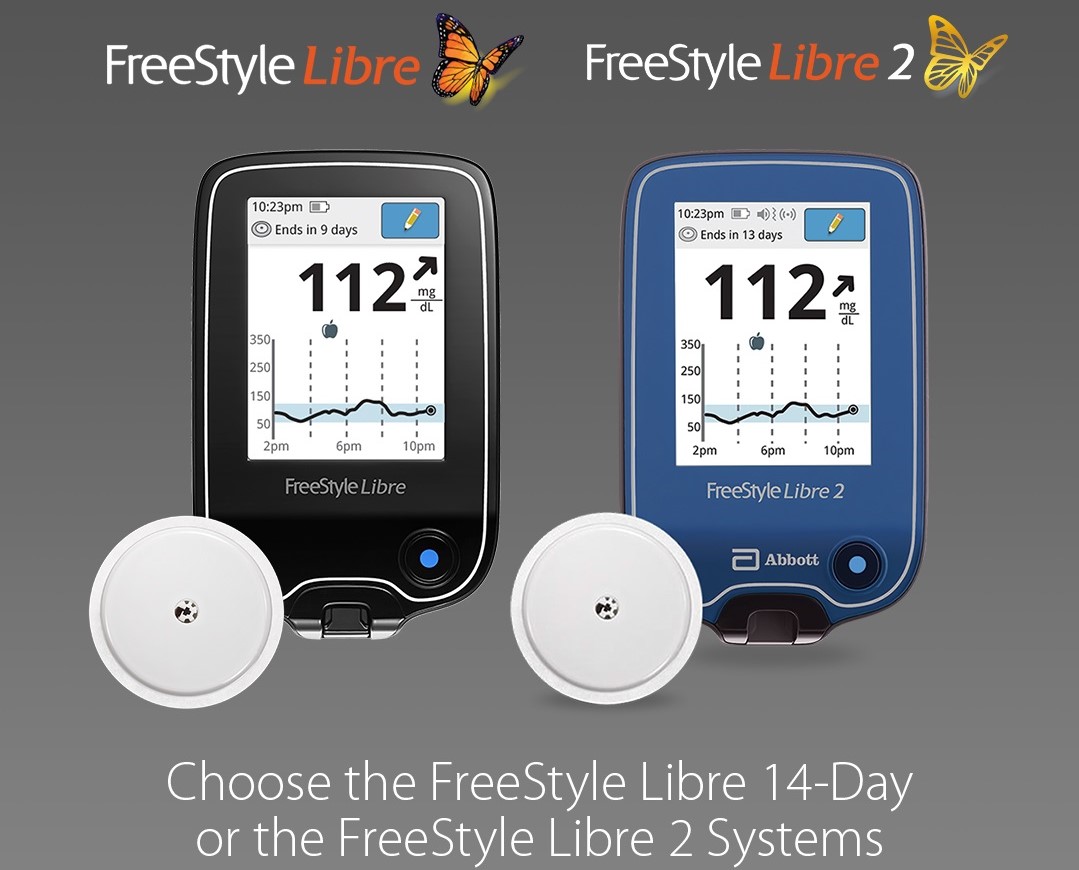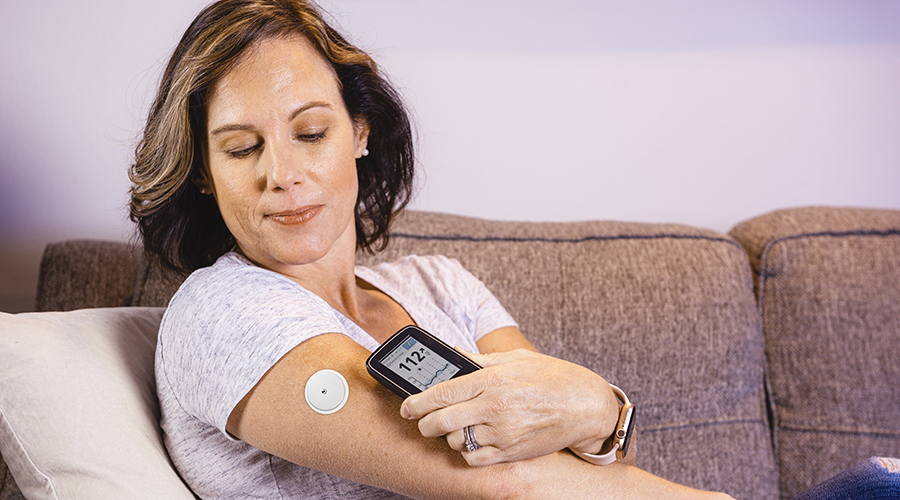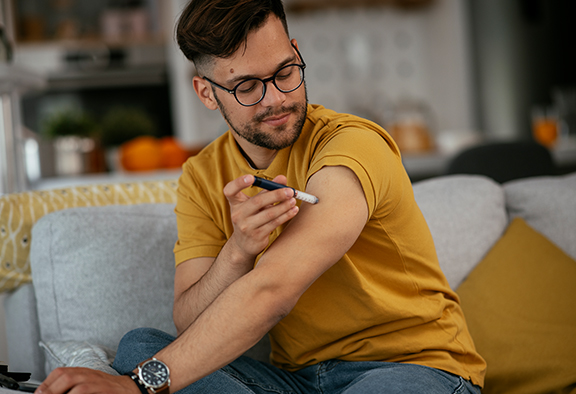November 19, 2020
Freestyle Libre vs. Freestyle Libre 2 CGM
What's the difference between the FreeStyle Libre 14-Day and the new FreeStyle Libre 2 from Abbott? We'll provide all the differences so you'll know which Continuous Glucose Monitor is right for you.
Share This Story

“Should I switch to the FreeStyle Libre 2 system?” Since this system launched recently, many FreeStyle Libre 14 day system users have asked themselves this question. In the United States, the FreeStyle Libre 2 system launched in 2020. Here at US MED, our team has been asked everything from “What’s the difference?” to “Is it worth it to switch?” to “Does it warn you of highs and lows like the Dexcom G6?” To help keep you informed, we’re going to compare and contrast the differences between the FreeStyle Libre 14 day system and the FreeStyle Libre 2 system.
Before we get started, we’d like to point out that this article can’t replace medical advice from a qualified physician. When you’re planning to buy a CGM, you should always work closely with your healthcare team before making any decisions. Despite this, the team at US MED is capable of giving you a brief overview of what’s on the market today. Read on for our comparison of these FreeStyle Libre systems, or check out our article on the different CGMs that are currently available!
 How FreeStyle Libre Systems Work
How FreeStyle Libre Systems Work
Both FreeStyle Libre systems consist of a reader and a sensor. You’ll place the sensor on the back of your upper arm, where it measures the levels of glucose found in the fluid under your skin, or “interstitial fluid.” Checking glucose levels is as simple as scanning your sensor with a dedicated reader or smartphone.* That means you can keep a close eye on your glucose levels without constantly needing fingersticks.
However, there are times where you’ll need to rely on fingersticks when making treatment decisions. These times include:
- Whenever the “Check Blood Glucose” symbol appears on your reader
- When your symptoms do not match your readings
- When you have reason to suspect your readings might not be accurate
- When you notice symptoms that could indicate high or low blood glucose
FreeStyle Libre 14 day system – Key Features
Along with its painless† glucose monitoring abilities, the FreeStyle Libre 14 day system has many other attractive features. Here are a handful of them, as listed on US MED’s online catalog:
- Get glucose data quick – sensor takes just one second to scan
- Stores glucose data up to 90 days
- No fingerstick calibration needed‡
- Reliable sensor readings (unless affected by certain medications)
- Touchscreen boasts a bright backlight and bold colors
- FreeStyle Libre 2 system – Key Features
Along with this, here’s what our store page has to say about the main features of the FreeStyle Libre 2 system:
- Integrated continuous glucose monitoring (iCGM) system with FDA approval
- Can be used by adults with diabetes and children as young as four years old
- Bluetooth-compatible blood glucose alerts
- No need for fingerstick calibration‡
- One scan gives you info on:
- Current glucose readings and trends
- A graph of your glucose levels over the past eight hours
- 14-day sensor readings§
The Similarities Between the FreeStyle Libre 2 system and the FreeStyle 14 day system
While the FreeStyle Libre 2 system and FreeStyle Libre 14 day system are different products, they have quite a few similarities. Both CGM systems have these features in common:
- No fingersticks required for calibration‡.
- Keep a close eye on your glucose levels with 1,440 readings per day – the most of any CGM currently on the market, and five times more glucose readings than competitor brands.
- Thin, small sensors. Each sensor is roughly the size of two stacked US quarters, making them the thinnest CGM sensors available today. Their low profile prevents the sensors from interfering with your normal activities.
- Sensors last up to 14 days and remain accurate throughout, allowing you to replace sensors less frequently.
- Wearers typically place sensors on the back of the upper arm.
- Sensors are water-resistant, allowing people to wear them while swimming, showering, or exercising.¶ (US MED highly recommends using CGM adhesives to make sure your sensor won’t fall off!)
- Trend arrows show glucose changes, which wearers can use to prevent going into hypo- or hyperglycemia.
- Apps allow you to track and monitor your glucose levels from your cell phone.*
- Built-in glucose finger testing meter can help check your CGM reading.
The Differences Between the FreeStyle Libre 2 system and the FreeStyle Libre 14 day system

First, you need to know that the FreeStyle Libre 2 system is an integrated continuous glucose monitor, or iCGM. According to the FDA, an iCGM is a CGM usable as part of an integrated system. More simply, it’s compatible with some other medical devices, electronic devices, and software. These could include automated insulin dosing systems, blood glucose meters, insulin pumps, and other diabetes management devices.
Notably, Abbott has told users that “this system must not be used with an automated insulin dosing system, such as a closed-loop insulin delivery system, and insulin suspend systems.” Are you unsure what this means? Right now, the FreeStyle Libre 2 system can work along with medical software and hardware. Still, it can’t directly control insulin delivery with an insulin pump.
The FreeStyle Libre 2 system has an audio alarm that can alert you within a minute to glucose levels that are dangerously high or low – no scans required.# With this feature, the FreeStyle Libre 2 system is on an even playing field with the Dexcom G6, one of its most prominent competitors. These alarms are optional and can be turned on or off as you wish. However, the FreeStyle Libre 14 day system does not have any notifications. If you’re worried that you’re approaching hyperglycemia or hypoglycemia, you’ll need to check your reader for confirmation.
The FreeStyle Libre 2 system’s combined mean absolute relative difference (MARD) comes in at 9.3% (or 9.2% for adults and 9.7% for pediatric patients). That makes it the only iCGM sensor that can sustain a high accuracy level over 14 days.§ If you’re unfamiliar with MARD, it’s a typical measurement of performance for CGM devices. This is what the experts at the American Diabetes Association have to say about it: “The mean absolute relative difference (MARD) is currently the most common metric used to assess the performance of CGM systems. MARD is the average of the absolute error between all CGM values and matched reference values. A small percentage indicates that the CGM readings are close to the reference glucose value, whereas a larger MARD percentage indicates greater discrepancies between the CGM and reference glucose values.”
The age groups each device can be used by are also essential to keep in mind. The FreeStyle Libre 14 day system is only usable by adults 18 years old or older. On the other hand, the FreeStyle Libre 2 system has received approval for children ages four and up and adults. In addition to this, the FreeStyle Libre 2 system has one-third fewer false alarms for children than competing CGM brands.**
So Is It Worth It to Upgrade to the FreeStyle Libre 2 system?
To simplify the factors we’ve explained above, the FreeStyle Libre 2 system has all the features of the FreeStyle Libre 14 day system, along with an alarm to alert you of highs and lows and the ability to be used by children ages four and older.
Again, it’s crucial to remember that US MED cannot provide medical treatment advice or tell you which device is best for you. However, we believe the information provided here should help you and your physician make an informed decision that fits your needs. Take a look at what each CGM system has to offer, and decide which ones have the features that are most important for your situation. Before deciding to switch, contact your insurance provider to make sure they’ll cover the cost of the FreeStyle Libre 2 system.
Ready To Take The Next Step?
Do you have more questions about the FreeStyle Libre 14 day system or FreeStyle Libre 2 system, or are you wondering what your insurance benefits cover? If so, contact US MED’s customer service team by phone or complete this form. If you’re ready to buy one of these systems, we’re happy to help! You can find the FreeStyle Libre 14 day system and the FreeStyle Libre 2 system right here at US MED.
Phone: 1-877-840-8218
If you need help using your CGM system for the first time, read US MED’s how-to guide right here. Find out more about CGM-compatible apps here.
DISCLAIMER: Failure to use FreeStyle Libre 14 day system or FreeStyle Libre 2 system as instructed in labeling may result in missing a severe low or high glucose event and/or making a treatment decision, resulting in injury. If readings do not match symptoms or expectations, use a fingerstick value from a blood glucose meter for treatment decisions. Seek medical attention when appropriate or contact Abbott at 855-632-8658 or FreeStyleLibre.us for safety info.
Do not take high doses of vitamin C (more than 500 mg per day), as this may falsely raise your FreeStyle Libre 14 day system and FreeStyle Libre 2 system sensor readings. FreeStyle Libre 14 day system sensor readings may be altered when taking high levels of aspirin.
*The FreeStyle LibreLink app and FreeStyle Libre 2 system app are only compatible with specific mobile devices and operating systems. Please check the compatibility guides for these apps for more information about device compatibility before using the app. Use of the FreeStyle LibreLink app requires registration with LibreView, a service provided by Abbott and Newyu, Inc.
†Haak, T. Diabetes Therapy (2017): https://doi.org/10.1007/s13300-016-0223-6
‡Use a blood glucose meter to confirm any highs or lows and when your symptoms do not match your sensor’s readings.
§FreeStyle Libre 2 User’s Manual.
¶Sensor is water-resistant in up to 1 meter (3 feet) of water. Do not immerse longer than 30 minutes.
#Notifications will only be received when alarms are turned on and the sensor is within 20 feet of the reading device.
**Among patient-applied, on-body sensors. Data on file, Abbott Diabetes Care.


 How FreeStyle Libre Systems Work
How FreeStyle Libre Systems Work




